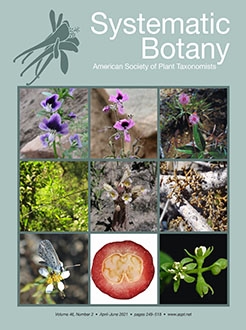All Viburnum species produce drupes with a hardened endocarp surrounding a single seed. Endocarp form varies greatly within Viburnum, and differences in shape have long been used to distinguish major subclades. Here we trace the evolution of Viburnum endocarp shape using morphometric analyses and phylogenies for 115 Viburnum species. Endocarp measurements were obtained from fruits sampled from herbarium specimens and from field collections, and shapes were analyzed using elliptical Fourier analysis. We infer that the first viburnums had flattened and grooved endocarps. Subsequently, there were multiple losses of grooving in conjunction with shifts to both highly flattened and nearly round endocarps. In several clades the parallel evolution of a derived endocarp shape was accompanied by changes in a suite of other fruit traits, yielding distinctive fruit syndromes likely related to bird dispersal. However, in other clades endocarp shapes similar to the ancestral form have been retained while other fruit traits (color, amount of flesh, nutritional content) have diverged. We quantify cases of parallel evolution in endocarp shape that cut across recognized fruit syndromes such as red, carbohydrate-rich fruits with flattened endocarps or blue, lipid-rich fruits with round endocarps. Our analyses now invite studies of function and the selective factors that have yielded the distinctive suites of fruit and seed traits that distinguish the major Viburnum lineages.
How to translate text using browser tools
11 August 2021
Parallelism in Endocarp form Sheds Light on Fruit Syndrome Evolution in Viburnum
Wendy L. Clement,
Theodore J. Stammer,
Amanda Goble,
Patrick Gallagher,
Michael J. Donoghue
ACCESS THE FULL ARTICLE
<
Previous Article
|

Systematic Botany
Vol. 46 • No. 2
April–June 2021
Vol. 46 • No. 2
April–June 2021
elliptical Fourier analysis
Morphometrics
phylogeny




